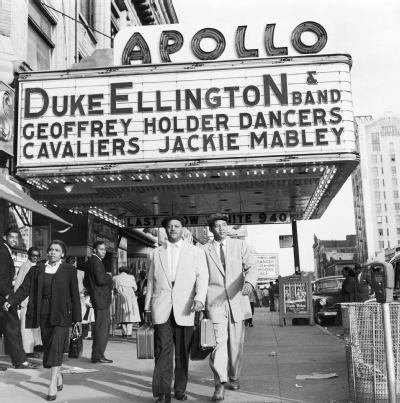 |
Craig White's Literature Courses Historical Backgrounds the Harlem Renaissance a.k.a. "The New Negro Movement" |
 |
In the 1910s through 1930s the Harlem Renaissance was an literary, artistic, and cultural movement named for the New York City neighborhood of Harlem, which in the early 1900s housed the USA's largest African American urban population. Related movements appeared simultaneously in other cities including Chicago, Detroit, Philadelphia, St. Louis, and others. In its day the movement was sometimes called the "New Negro Renaissance," and scholars today sometimes call it the "African American Renaissance."
The demographic background for these contemporary phenomena was the "Great Migration" of African American people in the late 19th and early 20th centuries. From slavery through Reconstruction, most African Americans lived and worked in rural areas and agricultural economies, especially in the South. Northern industrialization drew many African American workers to the cities of the North to escape Jim Crow political discrimination and gain new economic and cultural opportunities. World War 1 (1914-18) accelerated the Great Migration and its Renaissance, as white workers called to military service left jobs to fill. Simultaneously, African American servicemen in the U.S. military saw a larger world, especially Europe, where they helped popularize jazz.
As in the European Renaissance (1400s-1600s) and the American Renaissance (early 1800s), the Harlem Renaissance benefited from positive affects of urbanization: patrons to support the arts; exchange of ideas, techniques, opportunities, and support between formerly isolated artists and intellectuals in publishing and productions; exposure to international and cosmopolitan cultures.
In academic studies the Harlem Renaissance is best known as a literary movement featuring such prominent African American writers as Langston Hughes, Zora Neale Hurston, Countee Cullen, Jean Toomer, and many others.
In popular culture, however, the Harlem Renaissance may be best remembered as the African American center of the "Jazz Age" that flourished in the urban United States in the 1920s (a.k.a. the "Roaring Twenties"). Famous and pioneering musicians and singers included Duke Ellington, Count Basie, Billie Holiday, Louis Armstrong, Bessie Smith, many others.
How it ended: the Great Depression in 1929 wrecked the patronage system and "fat of the land" on which a movement like the Harlem Renaissance thrived. Writers dispersed. As with the American Renaissance, most of the chief writers survived and continued writing, but less as a coherent or interdependent movement.
Continuing critical issues:
Was the audience black or white? If both, how to reconcile different traditions and forms? (e.g., Hughes experimented with poetic forms derived from jazz, blues, spirituals, while Countee Cullen's poetic genres of the ballad and sonnet were primarily European.)
Need for white support and patronage may have distorted styles.
Major writers:
Claude McKay
Langston Hughes
Zora Neale Hurston
Countee Cullen
Jean Toomer
Nella Larsen
Jessie Redmon Faucet
Alain Locke
Arna Bontemps
Gwendolyn Bennett
Sterling Brown
James Weldon Johnson
Wallace Thurman
Music:
Duke Ellington
Count Basie
Fats Waller
Roland Hayes
Billie Holiday
Ella Fitzgerald
Sarah Vaughn
Paul Robeson
Art:
Aaron Douglas
Jacob Lawrence
Politics / Activism:
Hubert Harrison, Liberty League, The Voice
W. E. B. Du Bois
Marcus Garvey
A. Philip Randolph
Cultural sites:
Cotton Club
Savoy Ballroom
Apollo Theater
websites:
John Carroll University multimedia site on Harlem Renaissance
Artlex site on Harlem Renaissance visual art
Harlem
Renaissance website (lists many writers, musicians, visual artists, dancers)
